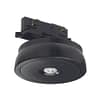Blog
Lighting Guide 7 – Lighting for Offices 2023 Update
What are the updates to the latest version of LG7? The latest version was published in January 2023 and supersedes the previous edition, which came out in 2015.
Here is an overview of the main two changes to the guide:
Home Offices
The introduction to the 2023 guide repeats a sentence from the introduction to the 2015 – “The office environment has changed considerably!” Not only has work on tablets and smartphones increased – adding to the flexibility that was started by people moving from working on fixed position PCs to laptops – hybrid working has also increased, and people may spend time working in their office, as well as off site, and from a home office. Indeed, home offices are now listed as a specific entry in the “Types of offices” section and they have their own challenges which are different from those of a traditional office space:
Positioning of desks in relation to windows and light sources needs to be considered as glare from daylight could cause the person issues. In addition a bedroom may have only a single pendant light source in the middle of the room. This could cause unwanted shadows – the person could even cast shadows onto their own desk.
The guide shows possible positions of desk to reduce these kinds of issues:


Figure 13.7 reduces potential of glare from the window, but shadowing could still be an possibility. There is the problem of having no distance to view in front of them.
Figure 13.8 still allows for optimum use of daylight and removes the potential of shadows from a single pendant light source in the middle of the room.
Another aspect that can affect the comfort of the person within the space is the décor. The surface reflectances will have an impact on the lighting deign and therefore the feel of the space. How a bedroom may be decorated may not be suitable for how a workspace should be, for example colours of walls or carpet.
Embodied and operational energy:
The guide suggests that a typical small to medium sized business could use approximately 25% of its total energy spend on lighting. This is a generalised view and so will vary from business to business. However, even as an estimate, this is not an inconsiderate cost.
The Guide refers to Part L of the building regulations, and also covers LENI, which has been mentioned in previous editions of the guide, as well as the options to add controls, and the different methodologies that are available.
For the first time the guide talks about embodied energy. The guide encourages the principles of the circular economy and the re-use of complete luminaires wherever it is possible to do so: “If they are in good condition and offer acceptable operational efficiencies”
The guide goes on to say that if luminaires are not suitable for re-use as complete units, it may be possible to change components. The example given is to replace control gear into existing bodies to avoid the embodied energy which would be used to produce a new luminaire body. The guide refers to TM66: Creating a Circular Economy for more information on this.



